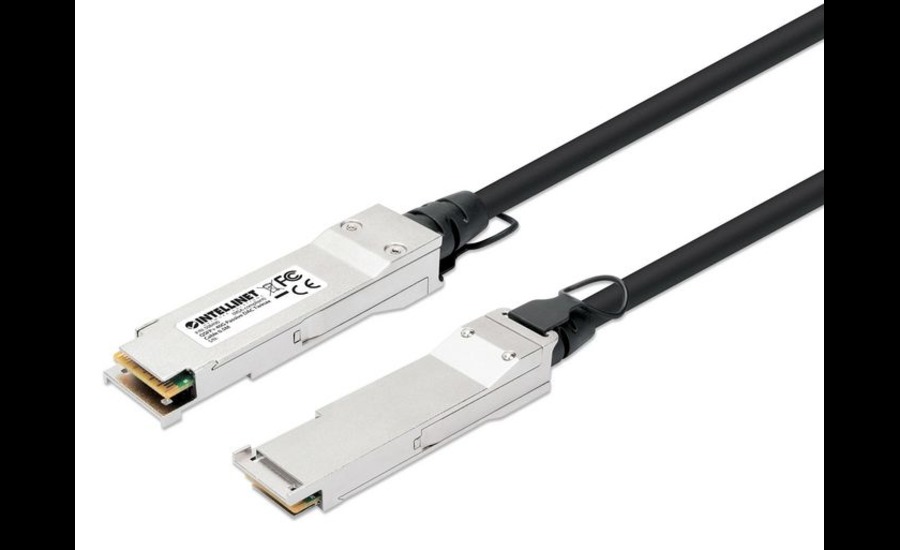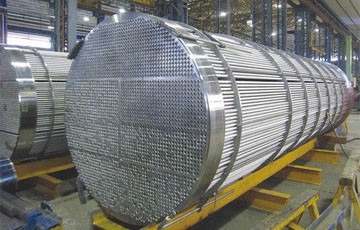Why Choose 40G QSFP+ DAC for Short-Range Interconnects?
In the rapidly evolving world of networking, the demand for high-bandwidth, low-latency connections has become paramount, especially in data centers where the efficient movement of data is crucial. Among the various solutions available, the 40G QSFP+ DAC (Direct Attach Copper) cable stands out as a reliable and cost-effective option for short-range interconnects. This article will delve into the advantages of 40G QSFP+ DAC, focusing on its low latency, low power consumption, and cost efficiency, while also exploring its specific applications in data centers.
Understanding 40G QSFP+ DAC
Before diving into its benefits, it’s essential to understand what 40G QSFP+ DAC is. A QSFP+ DAC is a high-speed copper cable with QSFP+ transceivers on both ends, designed for short-range communication between networking devices. Unlike optical modules, which use fiber optics to transmit data, DAC cables use copper, making them ideal for short distances.
Advantages of 40G QSFP+ DAC in Short-Range Interconnects
Low Latency
One of the primary advantages of using 40G QSFP+ DAC cables is their ability to provide ultra-low latency connections. Latency, or the time it takes for data to travel from one point to another, is a critical factor in network performance, particularly in environments that require real-time data processing, such as high-frequency trading, cloud computing, and virtualized environments.
Since 40G QSFP+ DAC cables are passive (without active components that could introduce delays), they deliver near-zero latency, ensuring that data is transmitted almost instantaneously between devices. This makes them particularly suitable for latency-sensitive applications where every millisecond counts.
Low Power Consumption
Power consumption is a significant consideration in modern data centers, where energy efficiency directly impacts operating costs and environmental sustainability. 40G QSFP+ DAC cables are known for their low power consumption compared to their optical counterparts.
DAC cables do not require any additional power for signal transmission, unlike active optical cables (AOCs) that need power for signal conversion. As a result, using DAC cables can lead to substantial power savings, especially in large-scale data centers where thousands of connections are required. This reduction in power usage not only lowers energy bills but also contributes to a greener, more sustainable operation.
Cost Efficiency
Another compelling reason to choose 40G QSFP+ DAC for short-range interconnects is its cost efficiency. Copper cables are generally less expensive to manufacture than fiber optic cables, and this cost advantage is passed on to the end user.
In addition to the lower initial cost of the cables themselves, there are also savings in terms of operational expenses. Since DAC cables do not require any additional infrastructure, such as transceivers or media converters, the total cost of ownership (TCO) is significantly reduced. This makes 40G QSFP+ DAC an attractive option for organizations looking to upgrade their network infrastructure without breaking the bank.
Specific Applications in Data Centers
The advantages of 40G QSFP+ DAC cables make them particularly well-suited for specific applications within data centers, where short-range, high-bandwidth connections are essential.
Top-of-Rack (ToR) Interconnects
One of the most common uses of 40G QSFP+ DAC cables is in Top-of-Rack (ToR) interconnects. In a ToR setup, each server rack is connected to a switch at the top of the rack, which then connects to the aggregation or core switches. Since these connections are typically within the same rack or between adjacent racks, the short range of 40G QSFP+ DAC is ideal.
The low latency and high bandwidth provided by DAC cables ensure that data can move quickly between servers and switches, minimizing bottlenecks and improving overall network performance. Additionally, the cost savings from using DAC cables in this scenario can be substantial, especially when deployed across multiple racks.
High-Performance Computing (HPC)
High-Performance Computing (HPC) environments, such as those used in scientific research, financial modeling, and big data analytics, require ultra-fast, low-latency connections to handle massive amounts of data. 40G QSFP+ DAC cables are an excellent fit for HPC environments due to their ability to deliver high-speed, low-latency connections over short distances.
In HPC clusters, where servers and storage systems are often located close together, the short reach of DAC cables is not a limitation but an advantage. By using 40G QSFP+ DAC cables, HPC systems can achieve the high throughput and low latency needed for complex computations and data-intensive tasks.
Network Storage Systems
Another key application of 40G QSFP+ DAC cables is in network storage systems, where fast data access and transfer are critical. Storage systems, including Network-Attached Storage (NAS) and Storage Area Networks (SANs), often require high-speed connections between storage devices and servers.
The low latency of DAC cables ensures that data can be retrieved and stored quickly, improving the performance of storage systems. Furthermore, the cost-effectiveness of DAC cables makes them a practical choice for storage networks that need to balance performance with budget constraints.
Conclusion
In the realm of short-range, high-bandwidth interconnects, the 40G QSFP+ DAC cable emerges as a powerful solution that addresses the critical needs of modern data centers. Its combination of ultra-low latency, low power consumption, and cost efficiency makes it an ideal choice for applications that demand swift and reliable data transfer.
Whether it’s enhancing the efficiency of Top-of-Rack interconnects, supporting the high demands of High-Performance Computing environments, or optimizing network storage systems, 40G QSFP+ DAC cables provide a practical and effective means of achieving seamless connectivity. As data centers continue to evolve, the adoption of 40G QSFP+ DAC cables will undoubtedly play a significant role in ensuring that networks operate at peak performance while maintaining cost and energy efficiency.






